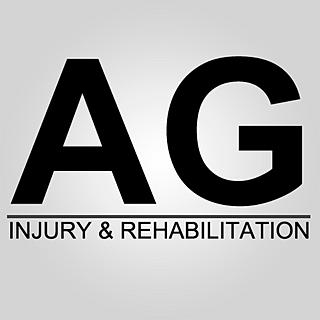Biomechanical Risk Factors of Shoulder Injury in Throwing Sports
- Arun Gray
- Jul 14, 2016
- 3 min read
Shoulder Anatomy
The shoulder is made up of three joints in total. The main joint at the shoulder, the glenohumeral joint connects the head of the humerous into the glenoid fossa and allows for flexion/extension, abduction/adduction, media/lateral rotation and circumduction. The joint is surrounded by the gleniod labrum (the rim of cartilage that the capsule attaches to) and supported by the rotator cuff muscle group, long head of biceps brachii and extracapsular ligaments.
The acromioclavicular joint connects the clavicle (collar bone - which attaches the shoulder to the rest of the body) to the acromion via the superior/inferior acromioclavicular ligaments.
The sternoclavicular joint connects the clavicle to the sternum via the sternoclavicular ligament and situates just above the attachment of the 1st rib.
The main muscle group responsible for stability and function at the shoulder is the rotator cuff muscles. These are made up of the supraspinatus (controlling abduction, most active during the first 15 degrees before the deltoid begins to contract), infraspinatus (controlling external rotation), teres minor (controlling external rotation & extension) and subscapularis (controlling internal rotation).

Also around the shoulder, the deltoid inserts onto middle of the lateral aspect of the humerus and is the prime mover during abduction, most active when the arm is medially rotated. The deltoid's anterior fibres also assist the pectoralis major in shoulder flexion. the posterior fibres are strongly involved in shoulder extension (the main active fibres in the "rowing" action) and is partially active during external rotation, alongside the rotator cuff. The lateral deltoid fibres perform shoulder abduction.
Elbow Anatomy
The elbow also plays a huge part in the throwing movement. The joint consists of two separate articulations: the trochlear notch of the ulna and the throchlea of the humerus (humeroulna joint); and the head of the radius and the capitulum of the humerus (humeroradial joint). At the head of the ulna, the olecranon fossa sits in the groove of the olecranon process. The ulna is connected to the humerus via the ulna collateral ligament, the radius is connected via the radial collateral ligament and the annular ligament is present around the radial head to act as a "sling" for stability. The elbow's medial and lateral collateral ligaments support the joint medially and laterally, respectively.

The elbow is capable of:
- Flexion: biceps brachii, brachialis, brachioradialis and forearm flexor muscles
- Extension: triceps brachii, anconeus
- Pronation: pronantor teres, pronator quadratus
- Supination: biceps brachii, supinator, extensor pollicis longus, entensor pollicis brevis
Stages of Throwing

The initial stage of the throw requires external rotation, extension and abduction (early cocking). The elbow then extends. When the throw is initiated, the elbow goes into flexion, the shoulder is adducted and internally rotated. During the acceleration phase shown above, the elbow is re-extended and the shoulder flexed. The ball is released at the end of this phase (fingers extending to release the ball) and the shoulder returns to a neutral position during the follow through. Throughout the motion, the trunk rotates and partially flexes to produce more force.
Risk Factors of Throwing Related Injury (Olsen et al, 2006)
- Load/fatigue (pitches per game/per season)
- Taller & heavier > shorter & lighter (injury rate possibly due to torque @ joints - longer limbs & ability to throw harder)
- Type of "throw"/bowl
- Increased elbow pain in 9-14 yr olds (Lyman et al, 2001)
- Technique - poor technique = increased injury rate (increased force in incorrect areas)
- Age - increased age = increased injury rate (due to reducing ligament rigidity)
- Ulna Collateral Ligament rupture most common injury in the elbow (pitching)
- Labral tear most common injury in the shoulder (pitching)
Assessment
During a shoulder/elbow assessment, all ranges of motion must be tested actively, passively and then against resistance to determine strength. Being a ball and socket joint, the shoulder is uniquely mobile in a number of planes. It is capable of flexion/extension, adduction/abduction, internal/external rotation and circumduction. The elbow is much less complex in its abilities, where flexion/extension and pronation/supination are the main movements. Passive movements and movements against resistance assess muscular integrity, where passive movements target more connective tissue. Strength is graded on the Oxford Scale.
There are a number of special tests at the shoulder due to its complex structure. Each test targets different musculature and assesses against different conditions. This is the same for the elbow, where the therapist can effectively assess the integrity of the joint and ligaments:
Shoulder
- Impingement tests - Hawkins Kennedy and Empty Can
- AC Joint Injury - Scarf Test
- Labral Tear - Biceps Load Tests and Anterior Slide
Elbow
- Collateral Ligament Injury - Valgus/Varus Tests
- Tendonopathy - Golfers/Tennis Elbow
Understanding the risk factors of sports-related injury (particularly those directly and indirectly related to overuse/fatigue) can help coaches and therapists reduce injury rate and improve injury prevention.






Comments